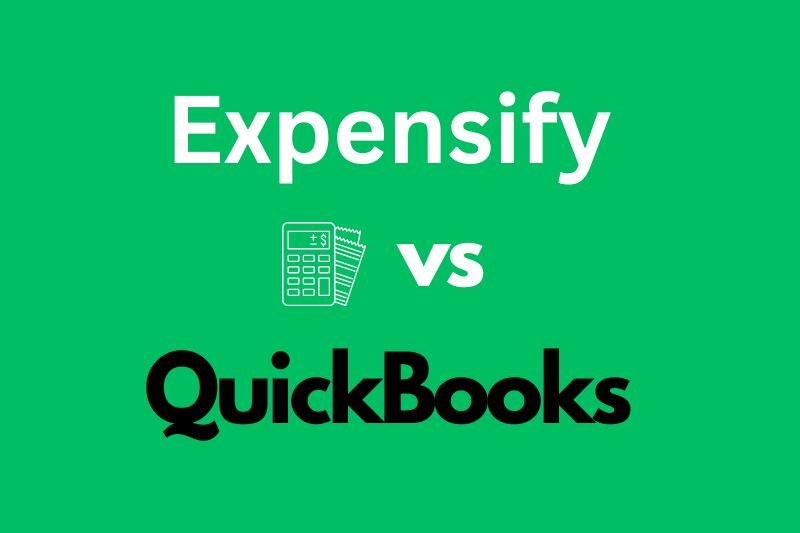As AI writing tools become more advanced, they change how students and researchers work. These tools can help with everything from brainstorming ideas to polishing final drafts. However, their use in academics raises important ethical questions.
Are AI writing assistants just high-tech cheating tools? Or are they the next step in how we write and learn? This post examines the pros and cons of using AI in academic writing. We’ll explore how these tools might help or hurt learning and what it means for the future of education.
Whether you’re a student, teacher, or just curious about AI, this topic matters. Our choices about AI in academics will shape how we learn and create knowledge for years.
The Emergence of AI Writing Assistants in Academics

Brief History
The journey of AI in academic writing has been nothing short of remarkable. What started as simple spell-checkers in the 1970s have evolved into sophisticated writing assistants capable of generating entire essays.
The real game-changer came in the late 2010s with the advent of natural language processing (NLP) and machine learning algorithms. These technologies allowed AI to understand context, suggest improvements, and even mimic human writing styles.
Current Trends
AI writing tools have become increasingly popular among students and educators. A 2023 survey by EdTech Magazine found that 68% of college students reported using AI writing assistants for at least some of their assignments.
These tools range from grammar checkers like Grammarly to more advanced platforms like GPT-3 powered writing aids.
For example, at Stanford University, a computer science professor recently allowed students to use ChatGPT to brainstorm and outline their essays, leading to a heated debate among faculty about the role of AI in education.
<blockquote class=”twitter-tweet”><p lang=”en” dir=”ltr”>New paper shows that ChatGPT is likely to impact academic research in big ways<br><br>The AI created short proposals for research papers in finance, which were peer-reviewed. All the AI papers had “a decent chance of eventual success in the reviewing process in a good finance journal” <a href=”https://t.co/zIAs28fI8U”>pic.twitter.com/zIAs28fI8U</a></p>— Ethan Mollick (@emollick) <a href=”https://twitter.com/emollick/status/1621695276577603584?ref_src=twsrc%5Etfw”>February 4, 2023</a></blockquote> <script async src=”https://platform.twitter.com/widgets.js” charset=”utf-8″></script>
Ethical Implications
1. Plagiarism Concerns
The rise of AI writing tools has brought plagiarism concerns to the forefront. While traditional plagiarism involves copying text from existing sources, AI-generated content presents a new challenge. When students submit AI-generated work as their own without proper attribution or significant editing, it falls into a gray area of academic integrity.
2. Academic Dishonesty
Submitting unedited AI-generated work as one’s own is increasingly viewed as academic misconduct. It’s akin to having someone else write your paper – the ideas and expressions aren’t your own. This raises questions about the true purpose of assignments and how we evaluate student learning.
3. Authenticity of Work
Original thought and expression are cornerstones of academic growth. When AI does the heavy lifting, it potentially robs students of the chance to develop their voice and critical thinking skills. The challenge lies in using AI to enhance, rather than replace, human creativity and analysis.
4. Impact on Learning
Over-reliance on AI writing assistants can hinder the development of crucial skills. Writing is not just about producing text; it’s about organizing thoughts, constructing arguments, and communicating ideas effectively. If students lean too heavily on AI, they might miss out on honing these essential abilities.
Institutional Policies and Guidelines
1. University Stances
Universities are grappling with how to address AI writing tools. Policies range from outright bans to cautious acceptance under specific guidelines. For instance, MIT has taken a proactive approach, encouraging faculty to redesign assignments to make them “AI-proof” while teaching students how to use AI tools ethically.
2. Plagiarism Checkers
Institutions are adapting their plagiarism detection methods to identify AI-generated content. Traditional tools like Turnitin are evolving to include AI detectors that can spot machine-generated text. However, as AI writing improves, these tools must constantly update.
Some universities are also exploring the use of paraphrasing tools to help students understand how to rephrase and cite AI-generated content properly. The goal is to teach students how to use AI responsibly rather than trying to eliminate its use.
It’s worth noting that while these tools are improving, they’re not infallible. The cat-and-mouse game between AI writing assistants and detection tools continues to evolve, presenting ongoing challenges for academic institutions.
University’s Stance with the Usage of AI in the post-ChatGPT Era

Universities worldwide are taking diverse approaches to using AI writing tools, ranging from outright bans to cautious integration. Here’s a look at how some institutions are responding:
1. Strict Prohibition
- Sciences Po (France): This prestigious institution has taken a hard line, banning ChatGPT and other AI tools. Students found that using these technologies risked expulsion, highlighting the severity of the policy.
- RV University (Bangalore, India): The university has forbidden ChatGPT use and may conduct spot checks on suspected users, requiring them to redo their work.
2. Policy Updates
- Washington University (St. Louis, USA): While not outright banning AI tools, the university has updated its academic integrity policies to include generative AI under plagiarism.
- University of Vermont (Burlington, USA): This institution is revising its plagiarism rules for ChatGPT and similar technologies.
3. Integrative Approaches
Some universities are taking a more proactive stance, incorporating AI tools into their curriculum:
- State University of New York at Buffalo (USA): Plans to include AI tools in a mandatory freshman course on academic integrity are underway.
- Furman University (Greenville, South Carolina, USA): The university is working on updating its curriculum to address and incorporate AI technologies.
These varied approaches reflect universities’ complex challenges in balancing technological advancement with academic integrity. While some institutions view AI tools as a threat to traditional learning methods, others see an opportunity to enhance education by teaching students how to use these technologies responsibly.
As AI continues to evolve, it’s likely that more universities will develop nuanced policies that neither fully ban nor unconditionally embrace these tools but rather seek to integrate them thoughtfully into the academic landscape.
Guidelines for Ethical Use of AI Writing Assistants
Like any other machinery, using AI for the holistic well-being of humankind should have a certain degree of boundaries to govern it so that it doesn’t turn into exploitation.
Here are a few recommendations that require attention to maximize the use of AI in a project without breaching its overall integrity.
1. Do’s and Don’ts
When using AI writing tools, it’s crucial to understand what’s acceptable and what’s not. Here are some guidelines:
Do:
- Use AI for brainstorming and generating ideas
- Employ AI tools for grammar and style checks
- Utilize AI to learn about different writing structures
Don’t:
- Submit AI-generated content as your own without significant editing
- Use AI to complete entire assignments without personal input
- Rely on AI for factual information without verification
2. Citing AI Assistance
As AI tools become more prevalent, citing their use is increasingly important. Here’s when and how to do it:
- When to cite: If AI significantly contributed to your work’s structure or content
- How to cite: Include a statement in your methodology or acknowledgments section, e.g., “The initial draft was generated using [AI tool name], with substantial revisions and additions by the author.”
3. Maintaining Academic Integrity
Balancing AI use with personal effort is key to maintaining academic integrity. Consider AI as a collaborative tool, not a replacement for your thinking. Always ensure that the final product reflects your understanding and voice.
Educator Perspectives

1. Challenges for Teachers
Educators face several challenges with the rise of AI writing tools:
- Detecting AI use: It’s becoming increasingly difficult to distinguish between human and AI-generated text.
- Adapting assignments: Teachers must design tasks assessing understanding, not just writing ability.
- Keeping up with technology: The rapid evolution of AI tools requires constant learning and adaptation.
2. Encouraging Ethical Use
Educators can employ several strategies to promote ethical AI use:
- Open dialogue: Discuss the pros and cons of AI tools in class.
- Clear guidelines: Establish and communicate clear policies on AI use.
- Focus on process: Emphasize the importance of the writing process, not just the final product.
- Teach critical thinking: Help students develop skills that AI can’t replicate.
Practical Advice for Students
1. Enhancing Learning
AI can be a powerful learning tool when used correctly:
- Use AI for feedback: Get suggestions on your writing and learn from them.
- Analyze AI-generated text: Understand how it’s structured and why it’s effective.
- Compare your work: Write your draft, then compare it with AI-generated text to identify areas for improvement.
2. Avoiding Ethical Pitfalls
To stay within ethical boundaries:
- Be transparent: Always disclose your use of AI tools.
- Use AI as a starting point: Generate ideas with AI, but develop them yourself.
- Understand the assignment: If you doubt AI use, ask your instructor.
- Prioritize learning: Focus on developing your skills, not just completing assignments.
Conclusion
As AI continues to evolve, so must our approach to academic ethics. The goal isn’t to eliminate AI from academics but to integrate it to enhance learning without compromising integrity.
By using AI writing assistants ethically, students can improve their skills, educators can adapt their teaching methods, and the academic community can uphold its core values of original thought and honest scholarship.
Remember, the true value of education lies not just in the final product, but in the journey of learning and growth.
AI can be a powerful ally in this journey, but it should never replace the irreplaceable: your unique perspective, critical thinking, and intellectual development.
FAQs
Is it plagiarism to use AI writing assistants for my assignments?
Using AI-generated content without proper editing or acknowledgment can be considered plagiarism. It’s essential to ensure your work remains original.
Can I cite an AI writing assistant as a source?
While AI tools are not traditional sources, if they significantly contribute to your work, check your institution’s guidelines on acknowledging their use.
How can educators detect AI-generated content?
Many institutions use advanced plagiarism detection tools that can identify AI-generated text patterns.
What are the best practices for using AI tools ethically?
Use AI for inspiration or assistance in structuring your work, but always ensure the final content is your own and properly cited.




















